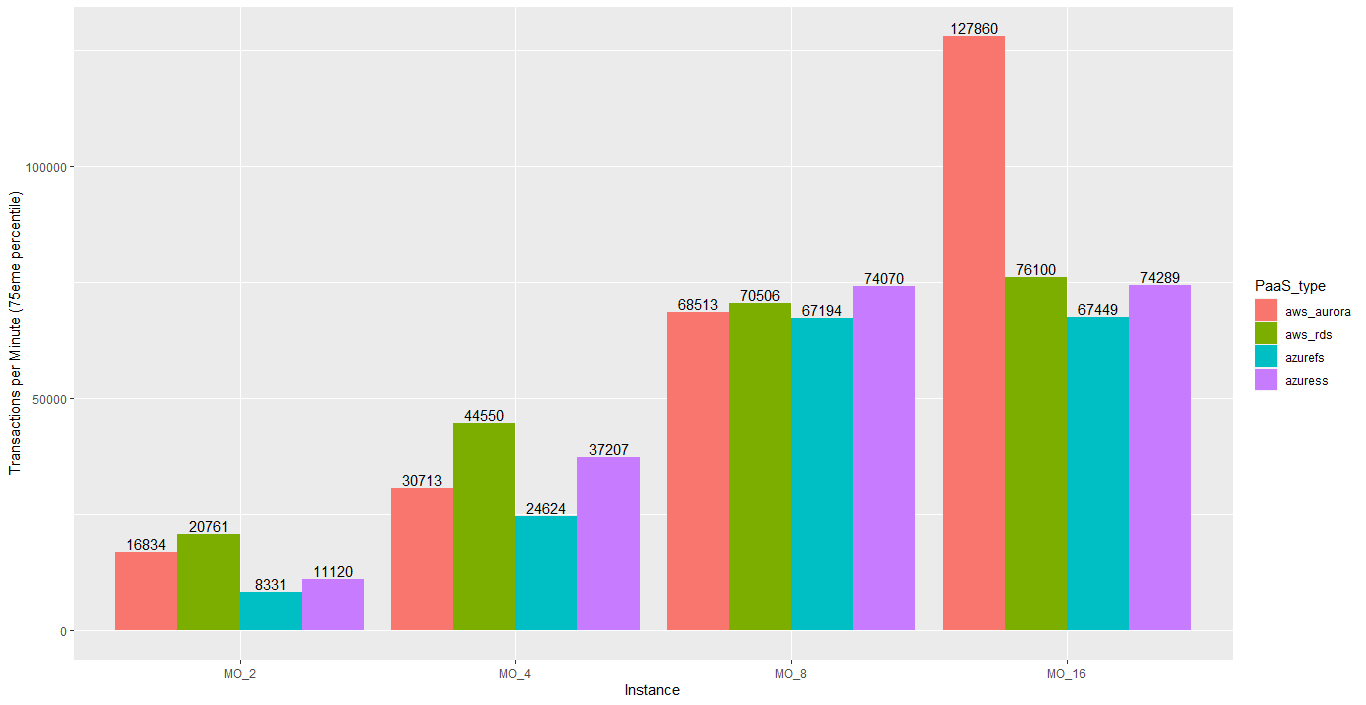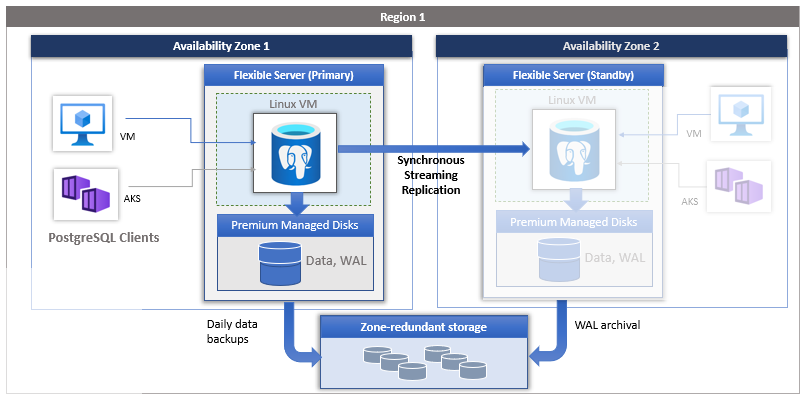

By default, checkpoints are 5 minutes apart. When the database crashes and needs to perform crash recovery, the transaction logs are replayed so that the database is brought up to date. A checkpoint flushes the current in-memory modified database blocks and WAL information from memory to disk, which provides durability in case the database crashes for obvious reasons. In Amazon RDS for PostgreSQL, during crash recovery, it replays the transaction logs since the last checkpoint. If replication lag is acceptable from seconds to minutes and up to five replicas are enough for your read workload, Amazon RDS for PostgreSQL is a better choice. If the read workload can’t afford high replication lag and requires more than five read replicas, Aurora PostgreSQL is a better choice. In some cases, this lag could go up to 30 seconds, and automatically restarts the reader so the lag doesn’t get higher. Usually, this replica lag is a few hundred milliseconds. The lag can be different for different replicas. As a result, all Aurora replicas are synced with the writer instance with minimal replica lag. Unlike Amazon RDS for PostgreSQL, where high write workloads can severely impact replication, Aurora uses shared storage for writer and readers. It writes the log records to six copies in three Availability Zones. Aurora provides this by scaling storage across three Availability Zones in the Region. With optimal configurations and workload, in Amazon RDS for PostgreSQL the replica lag is typically a few seconds.Īurora PostgreSQL supports up to 15 readers for scaling out read workloads and high availability within a single Region. This asynchronous replication is based on transactional logs, so high write activity at source instance, storage type mismatch, and instance class mismatch can cause high replication lag. Streaming replication continuously ships and applies the WAL records to replicas in order to keep them current. PostgreSQL records any modifications in data in write-ahead log (WAL) files. Replicas are synced with the source instance using PostgreSQL streaming replication.

It also supports five cross-Region read replicas. You can also promote read replicas when needed to become standalone DB instances. With Amazon RDS for PostgreSQL, you can create up to five replicas of a given source DB instance and serve high-volume application read traffic from multiple copies of your data, thereby increasing aggregate read throughput. It makes it easy to scale out beyond the capacity constraints of a single DB instance for read-heavy database workloads. ScalabilityĪmazon RDS read replicas help reduce the load on the primary DB instance by offloading your read workloads to the read replica DB instances. The following sections discuss some of the key components to compare Amazon RDS for PostgreSQL and Aurora PostgreSQL.

The following diagram illustrates the differences between the Multi-AZ solutions for Amazon RDS for PostgreSQL and Aurora PostgreSQL. The combination of PostgreSQL compatibility with Aurora enterprise database capabilities provides an ideal target for commercial database migrations.

Aurora improves upon PostgreSQL for massive throughput and highly concurrent workloads. The underlying storage grows automatically in chunks of 10 GiB, up to 128 TiB. They both offer provisioning various types of database instances, multiple PostgreSQL versions, managing backups, point-in-time recovery (PITR), replication, monitoring, Multi-AZ support, and Storage Auto Scaling.Īmazon RDS for PostgreSQL supports up to 64 TiB of storage and recent PostgreSQL versions.ĭB instances for Amazon RDS for PostgreSQL use Amazon Elastic Block Store (Amazon EBS) volumes for database and log storage.Īurora PostgreSQL uses a high-performance storage subsystem customized to take advantage of fast distributed storage. OverviewĪmazon RDS for PostgreSQL and Aurora PostgreSQL are fully managed open-source PostgreSQL database services. We analyze the differences in performance, scalability, failover, storage, high availability, backup, and database versions.
#Azure postgresql vs aws postgresql how to#
In this post, we discuss how to determine the best option between Amazon RDS for PostgreSQL and Aurora PostgreSQL for your workloads and business requirements. Amazon Relational Database Service (Amazon RDS) supports two types of Postgres databases: Amazon RDS for PostgreSQL and Amazon Aurora PostgreSQL-Compatible Edition. If you’re planning to move your self-managed PostgreSQL database or refactoring your commercial databases to PostgreSQL on AWS, you have to decide which database service best suits your needs.


 0 kommentar(er)
0 kommentar(er)
